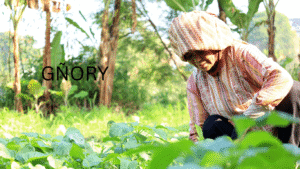Introduction: The Significance of Makar Sankranti
Makar Sankranti is one of the most significant festivals in India, celebrated with great enthusiasm and reverence across various states. In Maharashtra, the festival is marked by special rituals, vibrant traditions, and the exchange of heartfelt wishes in the Marathi language. The festival signifies the sun’s transit into the zodiac sign of Capricorn (Makar Rashi), marking the end of the winter solstice and the beginning of longer days.
Makar Sankranti is not just a cultural celebration; it’s a time to express gratitude, bond with loved ones, and spread joy through meaningful wishes. This blog post will provide you with authentic and unique Makar Sankranti wishes in Marathi, along with their cultural significance and how you can use them to make the festival special for your friends and family.
Historical and Cultural Background of Makar Sankranti
Makar Sankranti has deep-rooted connections with ancient Hindu traditions. The festival is mentioned in various scriptures and texts, symbolizing the end of inauspicious days and the beginning of an auspicious period. It is a festival that celebrates the sun god, Surya, and is often associated with harvest, prosperity, and new beginnings.
In Maharashtra, Makar Sankranti is known as ‘Tilgul Sankranti,’ and the exchange of tilgul (sesame seeds and jaggery) is a unique tradition. The sweetness of tilgul symbolizes the warmth and affection shared among people, and the phrase “Tilgul ghya ani goad goad bola” (take this sweet and speak sweetly) is a popular saying during the festival.
Why Makar Sankranti Wishes in Marathi are Special
Marathi, the native language of Maharashtra, adds a personal touch to the Makar Sankranti wishes. Wishing someone in their mother tongue not only strengthens the bond but also conveys the message in a more heartfelt manner. The language is rich in expressions and can beautifully capture the essence of the festival.
The significance of sending wishes in Marathi lies in the cultural connection it fosters. It helps in preserving traditions, promoting the regional language, and ensuring that the younger generation stays connected to their roots.
Popular Makar Sankranti Wishes in Marathi
Here are some popular Makar Sankranti wishes in Marathi that you can share with your loved ones:
- “मकर संक्रांतीच्या हार्दिक शुभेच्छा! तिळगुळ घ्या, गोड गोड बोला!”
Translation: Heartfelt Makar Sankranti wishes! Take tilgul, and speak sweetly! - “तिळगुळाची गोडी तुमच्या जीवनात कायमस्वरूपी राहो. मकर संक्रांतीच्या शुभेच्छा!”
Translation: May the sweetness of tilgul remain in your life forever. Best wishes for Makar Sankranti! - “नवीन सुरुवात, नवीन आनंद! मकर संक्रांतीच्या हार्दिक शुभेच्छा!”
Translation: New beginnings, new joy! Heartfelt wishes for Makar Sankranti! - “सूर्याची किरणं तुमच्या जीवनात नव्या आशा आणि ऊर्जेचं स्वागत करो. मकर संक्रांतीच्या शुभेच्छा!”
Translation: May the sun’s rays bring new hope and energy to your life. Best wishes for Makar Sankranti! - “गोड गोड तिळगुळ खा, गोड गोड बोला, आणि मकर संक्रांतीच्या आनंदात सहभागी व्हा!”
Translation: Eat sweet tilgul, speak sweetly, and participate in the joy of Makar Sankranti!
How to Personalize Makar Sankranti Wishes
While the above wishes are commonly shared, adding a personal touch can make them more meaningful. Here are a few tips to personalize your Makar Sankranti wishes:
- Include the Recipient’s Name: Addressing the recipient by their name makes the wish more personal and direct.
- Mention Personal Memories: Recalling a shared memory related to Makar Sankranti can add a nostalgic element to your wish.
- Add a Blessing or Prayer: Including a short blessing or prayer for the recipient’s well-being adds a spiritual touch.
- Customize According to the Relationship: The tone and content of the wish can be tailored based on your relationship with the recipient – whether they are a family member, friend, or colleague.
The Role of Makar Sankranti in Strengthening Relationships
Makar Sankranti is more than just a festival; it’s an opportunity to strengthen relationships. The tradition of exchanging tilgul and wishing each other fosters a sense of community and belonging. It’s a time to forgive and forget, start afresh, and spread positivity.
The act of sending Makar Sankranti wishes in Marathi can help in bridging gaps, rekindling old relationships, and creating new bonds. It’s a gesture that shows you care and are thinking of the recipient during this festive time.
Modern Ways to Share Makar Sankranti Wishes in Marathi
With the advent of technology, the ways to share wishes have evolved. Here are some modern methods to send Makar Sankranti wishes in Marathi:
- Social Media: Platforms like WhatsApp, Facebook, and Instagram allow you to share wishes instantly with a wide audience. You can create customized posts, stories, or status updates in Marathi.
- E-Cards: Numerous websites offer e-cards with Marathi wishes that you can personalize and send via email or messaging apps.
- SMS/WhatsApp Messages: For a more personal touch, you can send direct messages with your customized Marathi wishes.
- Video Greetings: Record a short video message in Marathi and send it to your loved ones. This adds a personal and visual element to your wishes.
- Handwritten Notes: If you prefer a traditional approach, consider writing a note or letter in Marathi and delivering it in person or via mail.
Makar Sankranti in Different Parts of Maharashtra
The celebration of Makar Sankranti varies across different regions of Maharashtra, adding to the diversity of the festival. Here’s how the festival is celebrated in various parts:
- Mumbai: In Mumbai, Makar Sankranti is celebrated with kite flying and the exchange of sweets. The city comes alive with vibrant colors as people from all communities participate in the festivities.
- Pune: In Pune, the festival is marked by the exchange of tilgul and special cultural events. Women often gather for ‘Haldi-Kunku’ ceremonies where they exchange gifts and sweets.
- Nagpur: In Nagpur, the festival is celebrated with community gatherings, and people take a holy dip in rivers like the Godavari and Krishna.
- Kolhapur: In Kolhapur, Makar Sankranti is associated with the worship of local deities, and special meals are prepared using sesame seeds and jaggery.
- Nashik: Nashik sees grand celebrations with fairs, kite flying, and the exchange of traditional sweets.
Unique Traditions Associated with Makar Sankranti in Maharashtra
Makar Sankranti is steeped in unique traditions that vary from one region to another. Some of these traditions include:
- Haldi-Kunku Ceremony: This is a special gathering of women, where they apply turmeric (haldi) and vermillion (kunku) to each other and exchange gifts and sweets.
- Kite Flying: Although kite flying is more popular in Gujarat, it has become an integral part of Makar Sankranti celebrations in Maharashtra, especially in Mumbai and Pune.
- Tilgul Distribution: The exchange of tilgul is a symbolic gesture of spreading sweetness and love. It is often accompanied by the phrase “Tilgul ghya, goad goad bola.”
- Community Feasts: Makar Sankranti is also an occasion for community feasts where special dishes like tilgul poli, puran poli, and bhogichi bhaji are prepared and shared.
Makar Sankranti Recipes: Sweet Delights for the Festival
Makar Sankranti is incomplete without indulging in some traditional sweets. Here are a few popular Marathi recipes that you can try during the festival:
a. Tilgul Ladoo:
Made with sesame seeds and jaggery, these sweet balls are a must-have during Makar Sankranti.
- Ingredients: Sesame seeds, jaggery, ghee, cardamom powder.
- Method: Roast sesame seeds and jaggery separately. Mix them together with ghee and cardamom powder, shape into ladoos.
b. Tilgul Poli:
A sweet flatbread stuffed with a mixture of sesame seeds, jaggery, and coconut.
- Ingredients: Whole wheat flour, sesame seeds, jaggery, coconut, ghee.
- Method: Prepare a dough with whole wheat flour. Make a stuffing with roasted sesame seeds, jaggery, and coconut. Roll out the dough, add the stuffing, and cook on a tawa with ghee.
c. Gulachi Poli:
Another variety of sweet flatbread made with jaggery and wheat flour.
- Ingredients: Wheat flour, jaggery, ghee, cardamom powder.
- Method: Prepare a dough with wheat flour and ghee. Roll out into small circles, fill with melted jaggery mixed with cardamom, and cook on a tawa.
- Method: Cook chana dal and jaggery together until they form a thick paste. Prepare dough with wheat flour and ghee, roll out into circles, fill with the chana dal-jaggery mixture, and cook on a tawa with ghee.
d. Puran Poli:
Though not exclusively for Makar Sankranti, this sweet dish is often made during the festival. The ingredients used in it are Chana dal, jaggery, wheat flour, ghee, cardamom.
e. Bhogichi Bhaji:
A special mixed vegetable curry made with seasonal vegetables, prepared during the Bhogi day preceding Makar Sankranti.
- Ingredients: Brinjal, carrots, green peas, flat beans, yam, fresh coconut, peanuts, sesame seeds, and a mix of spices.
- Method: Cook the vegetables with a paste made of roasted peanuts, sesame seeds, and coconut, along with traditional spices. This dish is usually served with bhakri (millet flatbread).
f. Gulachi Tikki:
A sweet treat made from jaggery and sesame seeds, this is a crunchy and delightful snack for the festival.
- Ingredients: Sesame seeds, jaggery, ghee.
- Method: Melt jaggery and mix it with roasted sesame seeds. Spread the mixture onto a greased plate and let it cool. Once set, cut into small pieces or tikki.
Importance of Sharing Makar Sankranti Wishes
Sharing Makar Sankranti wishes, especially in Marathi, is a meaningful tradition that strengthens relationships and spreads positivity. The festival is all about spreading warmth, joy, and good wishes, and by sending personalized messages, you ensure that your love and blessings reach your near and dear ones.
Makar Sankranti also provides an opportunity to reach out to those you haven’t connected with in a while. A thoughtful wish can reignite a relationship and show that you care. Whether through a simple SMS, a handwritten note, or a beautiful e-card, your wishes can make someone’s day brighter.
Crafting the Perfect Makar Sankranti Message
Crafting a perfect Makar Sankranti message involves more than just choosing the right words. It’s about capturing the spirit of the festival and expressing your heartfelt emotions. Here are some tips to help you craft the perfect message:
- Use Traditional Phrases: Incorporate traditional Marathi phrases like “Tilgul ghya, goad goad bola” to add authenticity.
- Keep it Simple and Genuine: The best wishes are often simple and straight from the heart. Avoid overly complex language and focus on the sentiment.
- Reflect the Festival’s Spirit: Mention the significance of the festival, such as new beginnings, positivity, and the warmth of the sun.
- Add a Personal Touch: Mention specific memories or shared experiences related to the festival.
- Encourage Togetherness: Emphasize the importance of coming together and celebrating as a community.
Incorporating Makar Sankranti Wishes in Various Contexts
Makar Sankranti wishes in Marathi can be incorporated into various contexts, making them versatile and suitable for different audiences. Here’s how you can tailor your wishes according to the recipient:
a. Family:
For family members, your wishes can be more intimate and warm, reflecting the close bond you share.
- Example: “आई-बाबांना आणि संपूर्ण कुटुंबाला मकर संक्रांतीच्या हार्दिक शुभेच्छा! तिळगुळाच्या गोडीत नवा आनंद आणि सुख लाभो.”
- Translation: Heartfelt Makar Sankranti wishes to Mom, Dad, and the entire family! May the sweetness of tilgul bring new joy and happiness.
b. Friends:
For friends, your wishes can be cheerful and full of fun, focusing on the joyous aspects of the festival.
- Example: “माझ्या सगळ्या मित्रांना मकर संक्रांतीच्या आनंदाच्या शुभेच्छा! तिळगुळ खा आणि जीवन गोड गोड जगा.”
- Translation: Joyful Makar Sankranti wishes to all my friends! Eat tilgul and live life sweetly.
c. Colleagues:
For colleagues, keep the tone professional yet warm, focusing on new beginnings and success.
- Example: “मकर संक्रांतीच्या शुभेच्छा! या नव्या वर्षात आपल्या सगळ्यांच्या यशस्वी आणि समृद्ध जीवनासाठी शुभेच्छा.”
- Translation: Best wishes for Makar Sankranti! Wishing everyone success and prosperity in the new year.
d. Social Media Posts:
When sharing on social media, your wishes can be more general and inclusive, designed to reach a broader audience.
- Example: “मकर संक्रांतीच्या सर्वांना हार्दिक शुभेच्छा! नवीन सुरुवात आणि नवीन आशा तुमच्या जीवनात उजळू दे.”
- Translation: Heartfelt Makar Sankranti wishes to everyone! May new beginnings and new hopes brighten your life.
Makar Sankranti in Modern Times
As we move forward in time, the celebration of Makar Sankranti continues to evolve, blending tradition with modernity. While the core values and rituals remain the same, the ways in which people celebrate have seen some changes. Here are a few modern aspects of the festival:
- Environmental Awareness: In recent years, there has been a growing awareness about the environmental impact of kite flying, particularly the harm caused to birds. Many people now opt for eco-friendly kites and avoid using harmful materials like plastic and nylon threads.
- Virtual Celebrations: Especially in the wake of global events like the COVID-19 pandemic, many families and communities have turned to virtual platforms to celebrate Makar Sankranti. Virtual poojas, online cooking classes, and digital greetings have become common.
- Cultural Fusion: With people migrating across states and countries, Makar Sankranti is often celebrated with a blend of different cultural practices. This fusion of traditions enriches the festival, making it more inclusive and diverse.
- Health-Conscious Sweets: As people become more health-conscious, there has been a shift towards preparing Makar Sankranti sweets with healthier alternatives like jaggery, millet, and organic ingredients.
Conclusion: The Essence of Makar Sankranti
Makar Sankranti is more than just a date on the calendar; it’s a celebration of life, light, and love. Whether you are exchanging tilgul, flying kites, or sending heartfelt wishes in Marathi, the festival brings people together and spreads joy.
By understanding the cultural significance and embracing the traditions of Makar Sankranti, you can make the festival even more special for yourself and your loved ones. Use this guide to craft meaningful and authentic wishes that resonate with the true spirit of the festival. As you share your Makar Sankranti wishes in Marathi, remember that it’s not just the words that matter, but the love and warmth behind them.
May this Makar Sankranti bring new beginnings, prosperity, and happiness to you and your loved ones. “मकर संक्रांतीच्या हार्दिक शुभेच्छा!” (Heartfelt Makar Sankranti wishes!)
FAQs on Makar Sankranti Wishes in Marathi
Why is it important to send Makar Sankranti wishes in Marathi?
- Sending wishes in Marathi adds a personal and cultural touch, strengthening relationships and preserving traditions.
What are some unique Makar Sankranti wishes in Marathi?
- Some unique wishes include “तिळगुळ घ्या, गोड गोड बोला!” and “सूर्याची किरणं तुमच्या जीवनात नव्या आशा आणि ऊर्जेचं स्वागत करो.”
How can I personalize Makar Sankranti wishes?
- Personalize wishes by including the recipient’s name, adding a blessing or prayer, and recalling shared memories.
What are some modern ways to share Makar Sankranti wishes?
- Modern methods include social media posts, e-cards, SMS/WhatsApp messages, video greetings, and handwritten notes.
How is Makar Sankranti celebrated in different parts of Maharashtra?
- Celebrations vary, with kite flying in Mumbai, Haldi-Kunku in Pune, and community feasts in Nashik.




